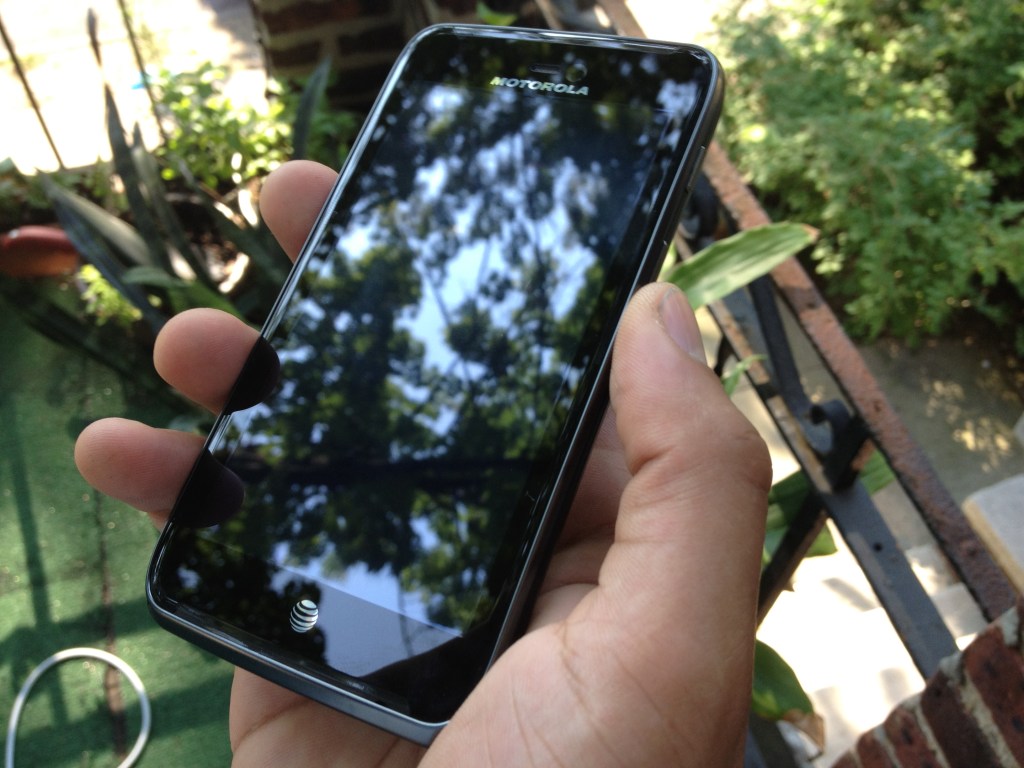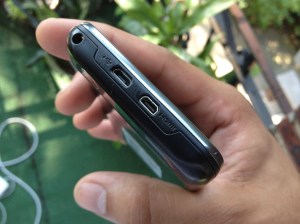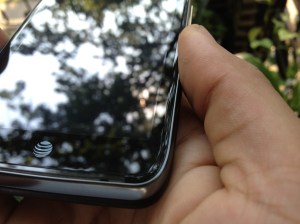
While Motorola’s Droid Razr and Droid Razr Maxx are two of the best phones around now, the pair has, sadly, been available only to customers of Verizon. That’s changing today with the release of the Atrix HD, a phone that borrows heavily from both of its predecessors, while somehow managing to stay really cheap. That’s no small feat, and it makes the Atrix HD the type of device that demands your attention and consideration.
The Good: The poor man’s Droid Razr with a fabulous screen
My initial reaction to the Atrix HD was wondering whether Motorola had accidentally sent me a Droid Razr. While it was clear from press shots that the design of Atrix HD was inspired by the Droid Razr, I wasn’t prepared for just how much the two phones resemble each other. The pair have the same shape, the same Kevlar backing, and the same sturdy look and feel.
Make no mistake, the Atrix HD is AT&T’s very own Droid Razr.
As a result, it’s hard to say that the Atrix HD pushes the design envelope on any level. But then again, it’s not really meant to. Instead, the device aims to be yet another enticing addition to AT&T’s lineup of $99 phones, which is pretty amazing considering the features it offers.

By far the most impressive of these features is its 4.5-inch high-definition display. Dubbed “ColorBoost,” the screen technology displays colors that are bright and sharp, making the experience of viewing things on the phone legitimately enjoyable.
(One thing that I like to do with phone reviews is ask for what I call knee-jerk “blink” reactions from people I know. My mother’s blink reaction: “It’s very light. I want this.” That’s a good sign for Motorola and AT&T, clearly.)
Another feature that still remains one of the best parts of Motorola’s phones is Smart Actions, Motorola’s task automation software. Capable of performing a variety of tasks when certain conditions are met, the application can, for example, turn your phone’s ringer off when you get to work, or automatically send a text message to your loved ones when you get home. The possibilities are very broad, and, fortunately, Smart Actions will suggest actions based on how you use your phone. The functionality remains a big selling point for Motorola’s devices.
I’m also a fan of Motorola’s new Circle Widget, which offers easy access to information like data usage stats, battery info, the weather, and time.
The bad: Dude, where’s my Lapdock?

What’s really surprising about the Atrix HD is that Motorola has stripped from it two of the Atrix line’s most central features: The Lapdock attachment, and its accompanying desktop-like Webtop environment. Together, they allowed past Atrix models to double as ultraportable laptops (albeit with very limited capabilities).
Motorola says that it removed the features from the Atrix HD in an effort to keep the price of the device down — an imperative no doubt pushed heavily by AT&T. Seeing as how the price of the Lapdock was one if its biggest criticisms, perhaps this is a move that won’t significantly affect sales of Atrix HD in the end.
Then again, with Lapdock support gone, why call the Atrix HD an Atrix at all?
And then there’s the battery life, which is, well, not great. Likely for the same cost-cutting reasons mentioned above, Motorola decided to not give the Atrix HD the Droid Razr Maxx’s 3300mAh battery, which was the device’s central selling point.
That’s a disappointment. While removing the souped-up battery does keep the price low and the profile slim, it’s clear that the Atrix HD’s bright 4.5-inch screen takes a major toll on its battery. Let’s just hope Motorola eventually releases a Atrix HD Maxx.
The bottom line: A great buy for $99
The thing worth keeping in mind with the Atrix HD is that all of its features come at $99, a realty that puts the device’s downsides in perspective. Moreover, when you compare the Atrix HD to similarly priced phones on AT&T — the Nokia Lumia 900, the iPhone 4, and the Galaxy S II, for example — it’s hard to find a better deal. That’s bad news for Nokia, sure, but it’s great news for Motorola, which has found a formula for design that works extremely well.







